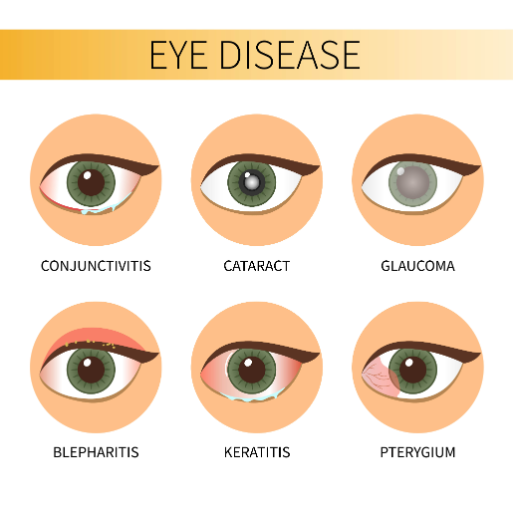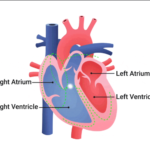Learn about the different types of eye diseases, as well as their symptoms, causes, and treatment options.
They say the eyes are the window to the soul, but they’re also highly specialized organs that offer us our window on the world. We’re a sight-based species, but sometimes the delicate, complex structures of the eye can develop injuries or diseases that can threaten our vital sense of sight.
Also read-Macular Degeneration : A Patient’s Guide To Macular Degeneration And Its Symptoms
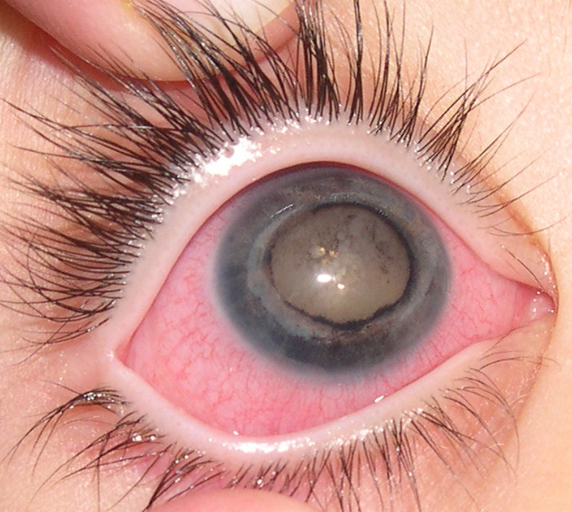
Eye Disease
The eyeball contains many critical parts, including:
- The pupil is the black opening in the middle of the eye that lets light into the eye.
- The iris is the colored part of the eye that helps regulate how big the pupil is and, thus, how much light enters the eye.
- The cornea is the outer sheath that covers the pupil and iris and helps focus light onto the retina at the back of the eyeball.
- The lens is a sheath of tissue that sits behind the iris and further focuses light and visual information onto the retina.
- The sclera is the white of the eye.
- The conjunctiva is a thin film that covers the white part of the eye and encases the back of the eye.
- The retina is a thin film at the back of the eye that organizes visual information and transmits it to the optic nerve.
- The macula is a point in the center of the retina.
- The optic nerve is a nerve that runs from the back of the eye to the brain and transmits visual information to be interpreted by the brain.
There are other components inside the eye as well, including blood vessels, fluid, and other structures that help keep the eyeball functioning the way it should. Any one of these components can become diseased or injured, and some of the most common types of eye diseases that can arise are outlined below.
Diabetic eye disease
Diabetes affects over 30 million Americans, or 9% of the country’s population, and is the seventh most common cause of death in the country, according to the Centers for Disease Control and Prevention. When blood glucose levels, also known as blood sugar levels, are excessively elevated, diabetes develops. This happens when your body either uses the insulin it is producing improperly or is unable to produce enough of it to maintain these levels. Although there are various forms of diabetes, all of them pose a risk to the health of the eyes, according to the National Institute of Diabetes and Digestive and Kidney Disorders.
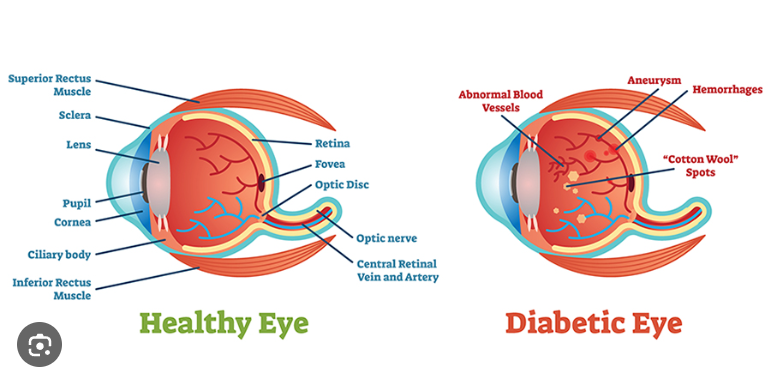
Eye Disease
Cataracts
Cataracts are a very common eye health problem, and they are directly related to aging. The AAO reports that “cataracts affect more than 24.2 million Americans age 40 and older. By 75, approximately half of all Americans will have cataracts.”
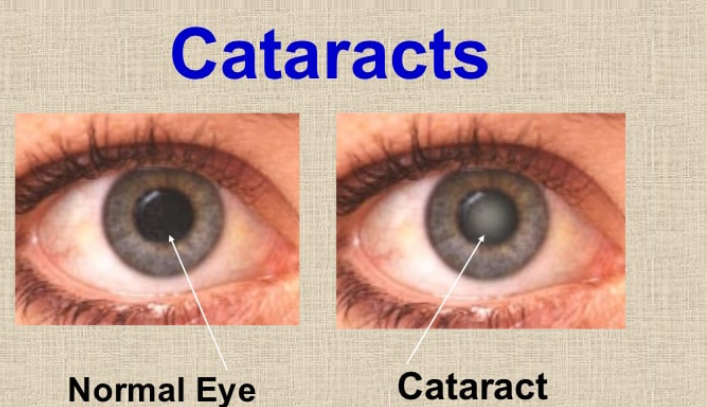
Eye Disease
Glaucoma
According to the AAO, over 2.7 million Americans over 40 suffer from glaucoma. Glaucoma is an ocular condition that damages the optic nerve and is associated with diabetes and aging. From the back of the eye to the brain, the optic nerve is a bundle of over a million nerve fibers. The brain interprets visual stimuli received from these nerves as sight. A buildup of fluid in the front portion of the eye causes an increase in intraocular pressure in glaucoma, which causes nerve damage known as neuropathy. This elevated pressure, known as ocular hypertension, is distinct from high blood pressure throughout the body, according to Seldomridge.But this high pressure in the eyes can lead to the development of glaucoma. Your ophthalmologist can test for this tension and check for glaucoma with a simple test called a tension check. If your ocular pressure is high, your doctor can take preventive measures to reduce the risk of damage to the optic nerve or help you manage glaucoma if it’s diagnosed.
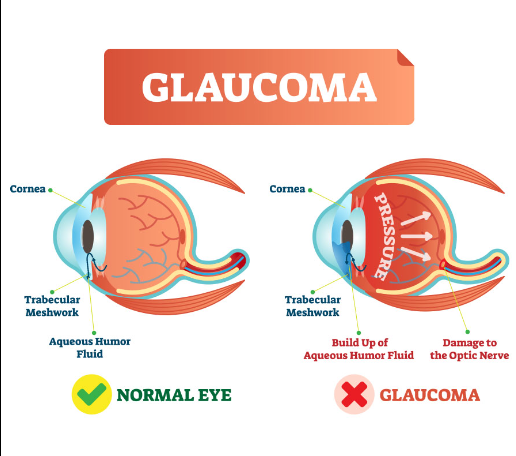
Eye Disease
Macular degeneration
Aging is also linked to macular degeneration, which damages the retina. The macula, the term for a region of tissue in the retina’s center, deteriorates as a result of this disease. The result of this degradation is hazy vision or blind areas in the middle of your field of vision.
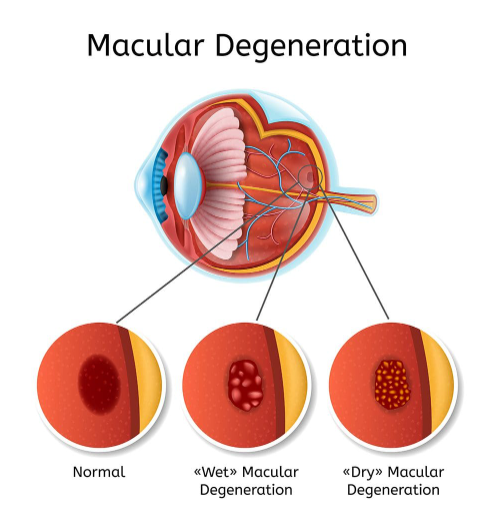
Eye Disease
The AAO reports that nearly 11.2 million Americans aged 50 and older have macular degeneration. “Typically, we don’t see macular degeneration before the age of 50 or so,” Seldomridge says. “And risk goes up as age increases. Age and family history are the two most important risk factors for macular degeneration.” However, smoking, being overweight or obese and having high blood pressure are also risk factors.
Conjunctivitis
Also known as pink eye, conjunctivitis refers to inflammation, swelling, or infection of the conjunctiva, the transparent membrane that covers the white part of the eyeball. Commonly caused by a viral or bacterial infection, conjunctivitis causes the white part of the eye to appear red. It may also make the eye feel itchy or gritty, like there’s a tiny grain of sand caught between the eyeball and the eyelid. It also causes the eye to extrude a discharge that can form a crust when you’re sleeping overnight. This crust can stick your eyelashes together and make it difficult to open your eye.
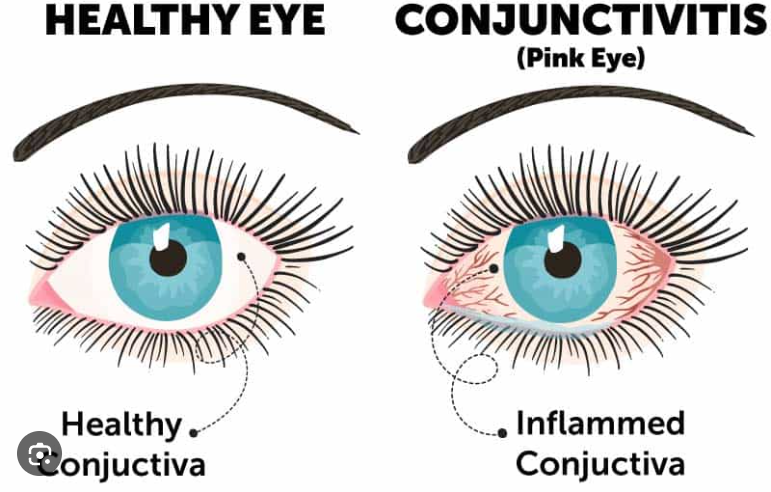
Eye Disease
Though pink eye is often associated with kids, it can happen at any age. And Seldomridge says, “Whether you’re a child or an adult, most episodes of conjunctivitis are related to a virus,” meaning that there’s often not a lot that can be done to clear it up faster; viral infections typically need to run their course, and antibiotics are not an appropriate measure to treat viral infections. However, some cases of conjunctivitis are caused by bacteria, in which case antibiotic eye drops would be the right approach.
Corneal diseases
The cornea is the dome-shaped, clear outermost layer of the eye that covers the iris and the pupil. It’s useful for protecting the eye and focusing light onto the retina, helping you see. The NEI reports that the cornea contains no blood vessels, and thus, the tissue receives its nutrients from tears and aqueous humor, which is a fluid in the front part of the eye just behind the cornea. “Every time we blink, tears are distributed across the cornea to keep the eye moist, help wounds heal, and protect against infection.”
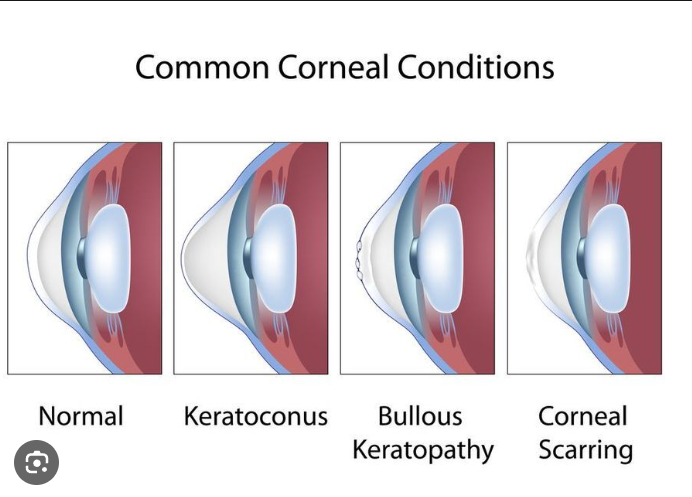
Eye Disease
Injuries and scratches to the cornea are common and can cause pain, sensitivity to light, reduced vision, and redness or inflammation. Allergies, such as pollen, can also impact the cornea, causing redness, itchiness, and a watery discharge.
Also read-Binge Eating Disorder : A Patient’s Guide To Binge Eating Disorder And Its Symptoms
images source: Google
Disclaimer: The opinions and suggestions expressed in this article are solely those of the individual analysts. These are not the opinions of HNN. For more, please consult with your doctor.







